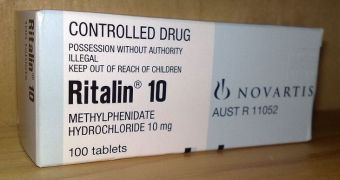In a new study conducted on animals, researchers discovered that the common medication Ritalin actually had the potential to improve focus and also to promote the ability to learn. The drug works on synapses, promoting the release of the neurotransmitter dopamine, which plays an important role in allowing neurons to communicate with each other, and therefore in promoting focus. In the research, Ritalin proved capable of boosting brain plasticity as well, as in the strength of synapses, the connections between neurons, e! Science News reports.
“Since we now know that Ritalin improves behavior through two specific types of neurotransmitter receptors, the finding could help in the development of better targeted drugs, with fewer side effects, to increase focus and learning,” says University of California in San Francisco (UCSF) professor of neurology Antonello Bonci, MD. He was also the principal investigator of the new paper, and a member of the UCSF Department of Neurology Ernest Gallo Clinic and Research Center. The new work was only made possible by previous studies, which demonstrated that neural plasticity is a trait that continues throughout life, and does not stop once a person reaches adulthood.
“We found that a dopamine receptor, known as the D2 receptor, controls the ability to stay focused on a task – the well-known benefit of Ritalin. But we also discovered that another dopamine receptor, D1, underlies learning efficiency,” says UCSF expert Patricia Janak, PhD. She, alongside Bonci, is a co-senior author of a new paper detailing the findings, which appears in the March 7 online issue of the respected scientific publication Nature Neuroscience. The team was able to determine that one of the primary therapeutic targets of Ritalin is the almond-shaped cluster of neurons called the amygdala, which is known to play a crucial role regulating learning, emotional memory and fear.
“Although Ritalin is so frequently prescribed, it induces many brain changes, making it difficult to identify which of those changes improve learning. By identifying the brain mechanisms underlying Ritalin's behavioral enhancements, we can better understand the action of Ritalin as well as the properties governing brain plasticity,” says former Gallo Center postdoctoral scientist Kay M. Tye, PhD. In the new experiments, the animals being tested were given Ritalin doses equivalent to the ones children regularly take. Therefore, the team says, there may be a high chance of the findings remaining valid for humans as well.

 14 DAY TRIAL //
14 DAY TRIAL //